
Building a packaging line lets you design a system that actually works for your unique products, space, and long-term business goals. But for many manufacturers, customizing a line can feel overwhelming.
Where do you start? Which packaging equipment makes sense for your product? And how do you ensure your investment supports current and future production needs?
Without a clear strategy, packaging lines can consist of mismatched equipment, inefficient layouts, and underutilized assets. This slows production and leads to costly overhauls, missed deadlines, and shrinking margins.
However, getting custom packaging solutions for your line doesn’t have to be complicated. With a thoughtful, phased approach, you can build a streamlined, flexible line that supports your output goals today and grows alongside your business tomorrow.
Why One-Size-Fits-All Doesn’t Work in Packaging
There’s a big difference between a packaging line that’s simply operational and one that’s truly optimized. While it might be tempting to patch together equipment as needs arise, this reactive approach often creates more problems than it solves. What looks like a working system on the surface may be hiding inefficiencies that quietly drain time, money, and productivity.

A poorly planned line may technically “work,” but it can result in:
- Frequent slowdowns and bottlenecks
- Manual workarounds that reduce throughput
- Equipment that doesn’t scale with growing demand
- Wasted space and underutilized equipment
On the other hand, a custom-designed line that considers your space, speed, and scale requirements can deliver long-term benefits:
- Increased efficiency and output consistency
- Lower labor and maintenance costs
- Adaptability to changing product formats or regulations
- Improved product quality and presentation
Custom packaging solutions give you control, clarity, and confidence, turning your packaging process into a competitive advantage rather than a daily challenge.
How to Design a Packaging Line That Works
The first step in building a high-performing packaging line is understanding your unique requirements. That means looking beyond your current setup and focusing on your products, your space, and your production goals.
Here are 3 initial steps to get you started:
- Assess Product Needs: What shapes, sizes, and packaging materials do you use? Are you labeling bottles, cartons, or pouches?
- Measure Available Space: How much floor space do you have for new packaging equipment? Are there layout restrictions or access issues?
- Plan the Line Flow: Where will each process happen (filling, labeling, sealing, coding), and how will products move between stations?
Many manufacturers like to start with shrink sleeve labelers, conveyors, cappers, and fillers, and let those choices inform the rest of their line. These core systems form the backbone of many lines and can be customized to match the pace and complexity of your operations.
Learn more about designing a custom line that fits your needs.
Choosing Custom Packaging Solutions That Scale With You
Once your line is mapped out, it’s time to select the right equipment for the job. That means you have to find systems that suit your specific products, production volume, and future scalability. The wrong packaging equipment can slow you down, but the right one can streamline your workflow, reduce errors, and scale as you grow.

Here are several key factors to consider:
- Product shape and material (round bottles vs. flat cartons)
- Label type (pressure-sensitive, shrink sleeve, etc.)
- Automation level (manual, semi-automatic, or fully automated)
- Output goals (batches per day, shifts per week)
It’s also important to avoid two common pitfalls: overbuying (investing in more systems than you need) and under-equipping (choosing equipment that can’t keep up). By matching each system to your line’s demands, you maximize ROI and minimize future headaches.
Find out which custom packaging solutions are right for you.
Modular vs. Integrated: Finding the Right Packaging Strategy
As you begin customizing your packaging line, one of the most important decisions you’ll make is how to structure it. The layout and type of equipment you choose will directly impact your flexibility, scalability, and overall investment strategy. The approach you take now can either limit your future options or open the door to smarter growth.
There are two primary ways to structure your packaging line: with a modular system or a fully integrated setup.
- Modular systems allow you to add or upgrade equipment as needed. They’re ideal for growing businesses or those with changing product lines.
- Integrated systems are designed as a complete solution, often offering high efficiency and automation, but with less flexibility.
Modularity gives you room to adapt. You can add labelers, cappers, or replace one station without overhauling the entire line. Most manufacturers prefer this choice because they can scale gradually without overspending up front.
See if modular or integrated systems fit your line best.
Design a Layout for a Smoother Workflow
An efficient line is all about a smart layout. Even the best equipment can fall short if it’s not positioned to support smooth, continuous movement. Thoughtful workflow design keeps production flowing, eliminates wasted steps, and creates a safer, more manageable environment for your team.
Here are a few ways you can optimize your workflow design:
- Minimize bottlenecks by keeping processes in a logical, linear flow
- Ensure ergonomic access for operators and maintenance teams
- Allow space for inspection, rework, or packing stations
- Reduce unnecessary movement of products or personnel
A well-planned layout saves time, reduces the physical strain on your team, and simplifies changeovers, cleaning, and maintenance. Over time, these small efficiencies compound, resulting in faster throughput, fewer errors, and a more agile production environment that’s ready to grow with your business.
Learn more about how to improve efficiency with a better workflow design.
Scale Your Packaging Line the Right Way
As your business grows, so will your production demands. But scaling doesn’t have to mean ripping out your entire system or making risky, all-at-once investments. With the right strategy, you can expand capacity gradually, staying nimble while still meeting increasing customer demand.

Here are 3 smart ways you can scale:
- Invest in modular packaging equipment that supports phased upgrades.
- Start with semi-automated systems that can transition to full automation.
- Upgrade critical components like labelers, conveyors, or sensors before overhauling your entire setup.
This approach allows you to meet demand without overcommitting resources. And when expansion is intentional, it sets your production team up for long-term success. Scalable systems give you breathing room so growth feels like a natural next step.
Read about how to scale your line without breaking the bank.
A Packaging Line Built Around You
The most efficient packaging lines are custom-built for the products, space, and people they serve. By taking a thoughtful, phased approach to customization, you can invest in custom packaging solutions that support your business now and into the future.
When you’re ready to take the next step, our team is here to help you plan, customize, and scale a packaging line that fits your workflow, your budget, and your goals.
Ready to build a better line? Schedule a free consultation today.
.webp?width=200&height=114&name=2x-Packleader-logo-large%20(1).webp)

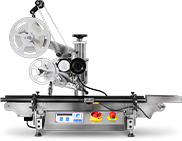


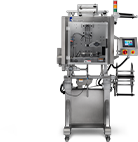
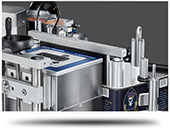
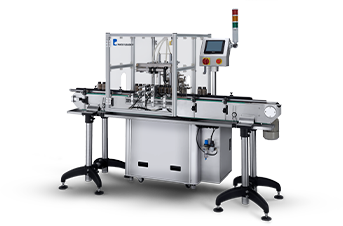

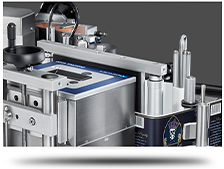





.webp?width=360&name=2x-color-logo%20(1).webp)